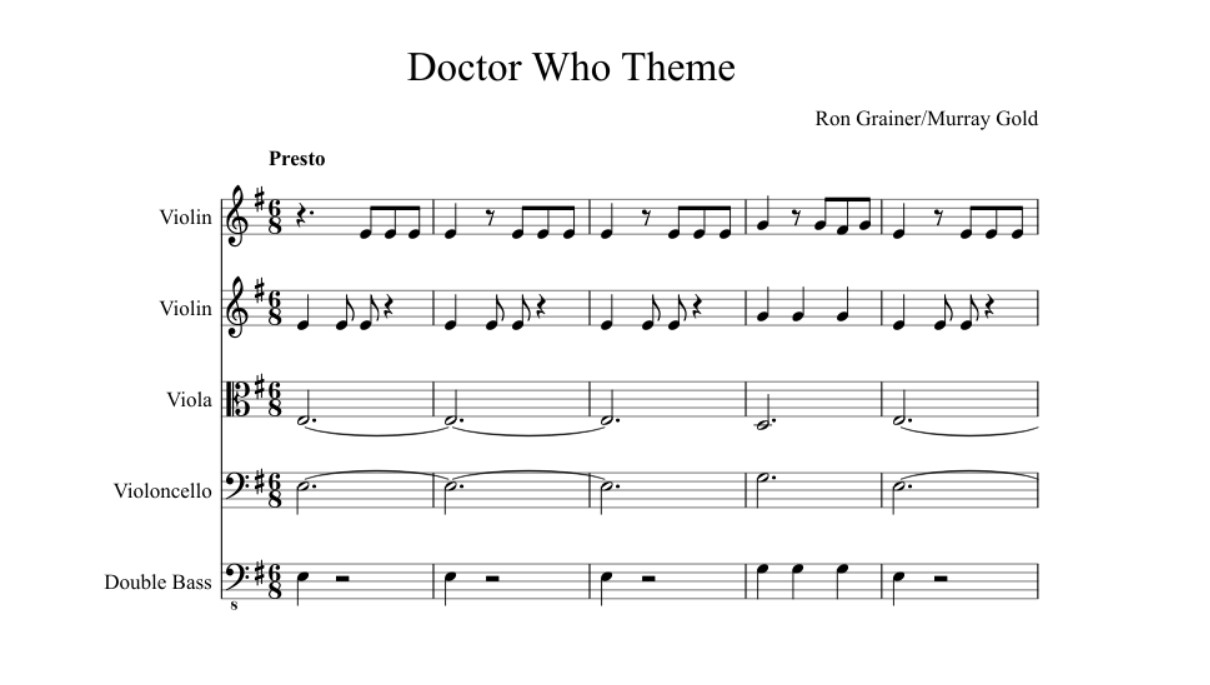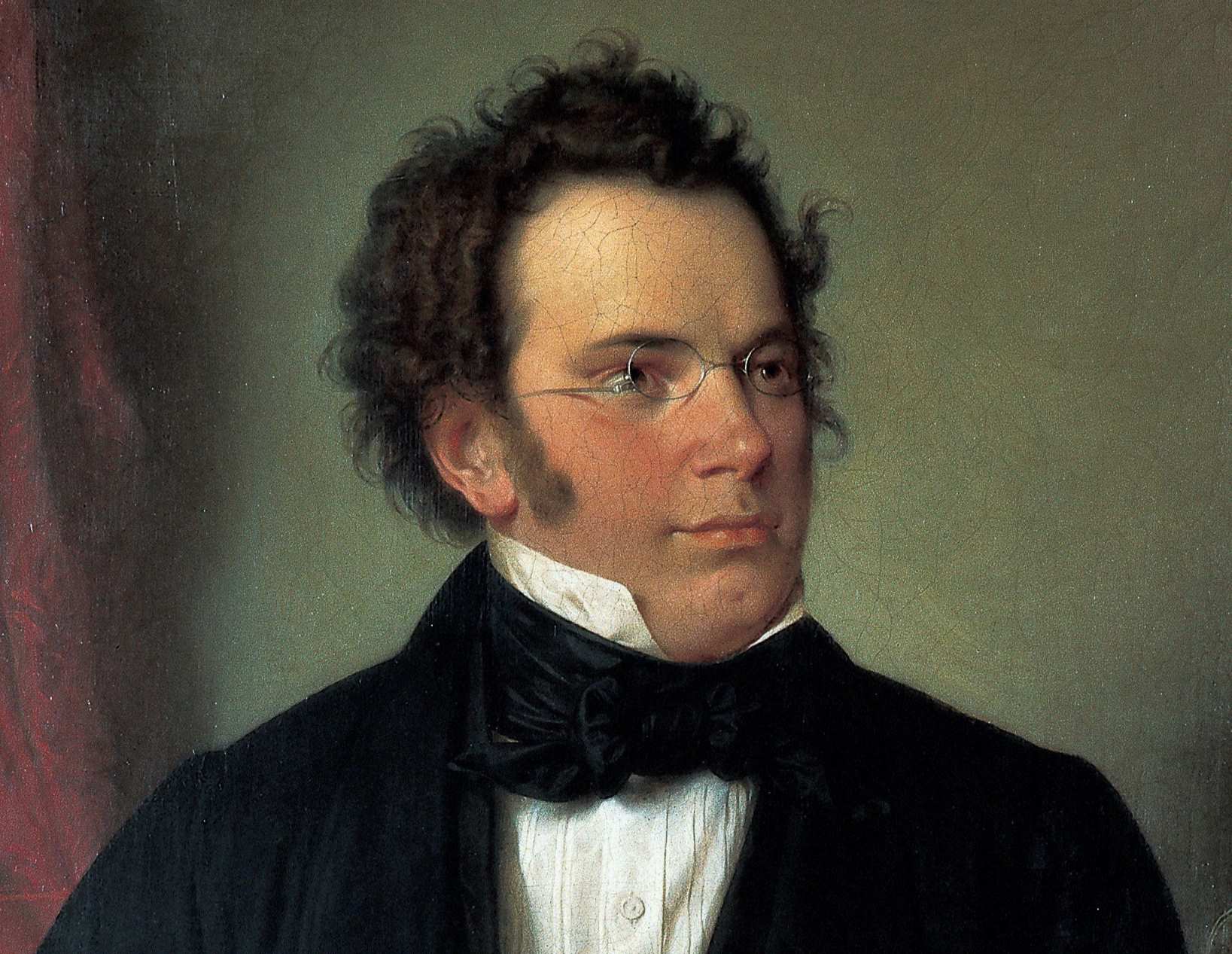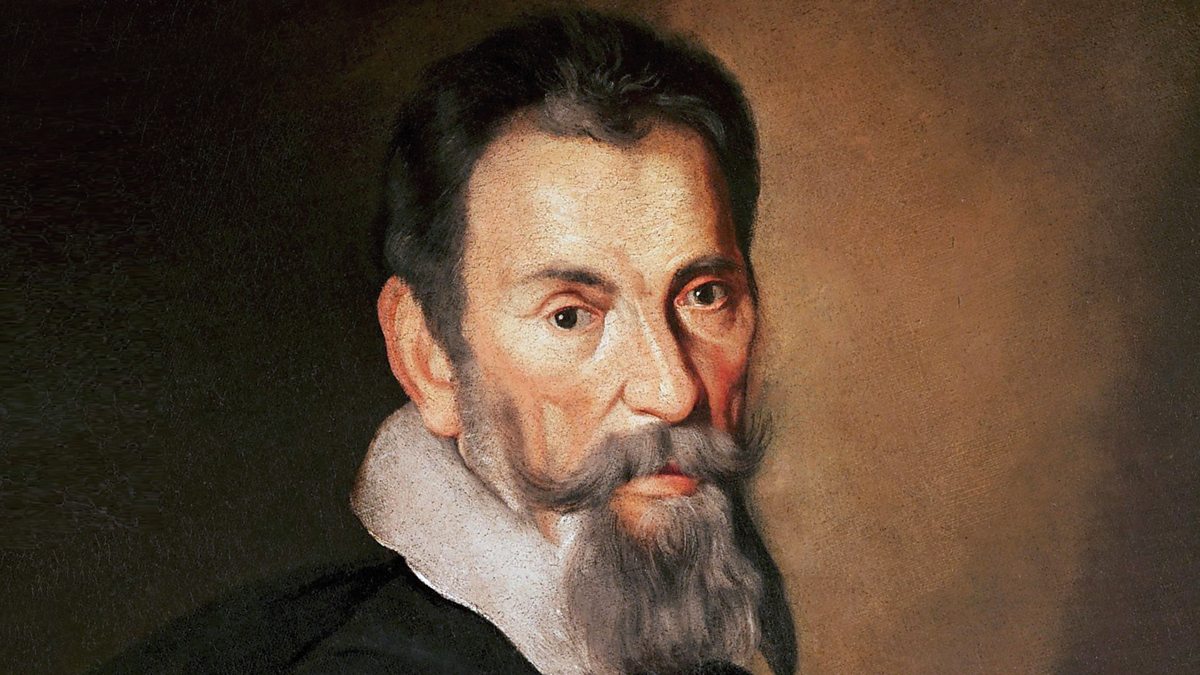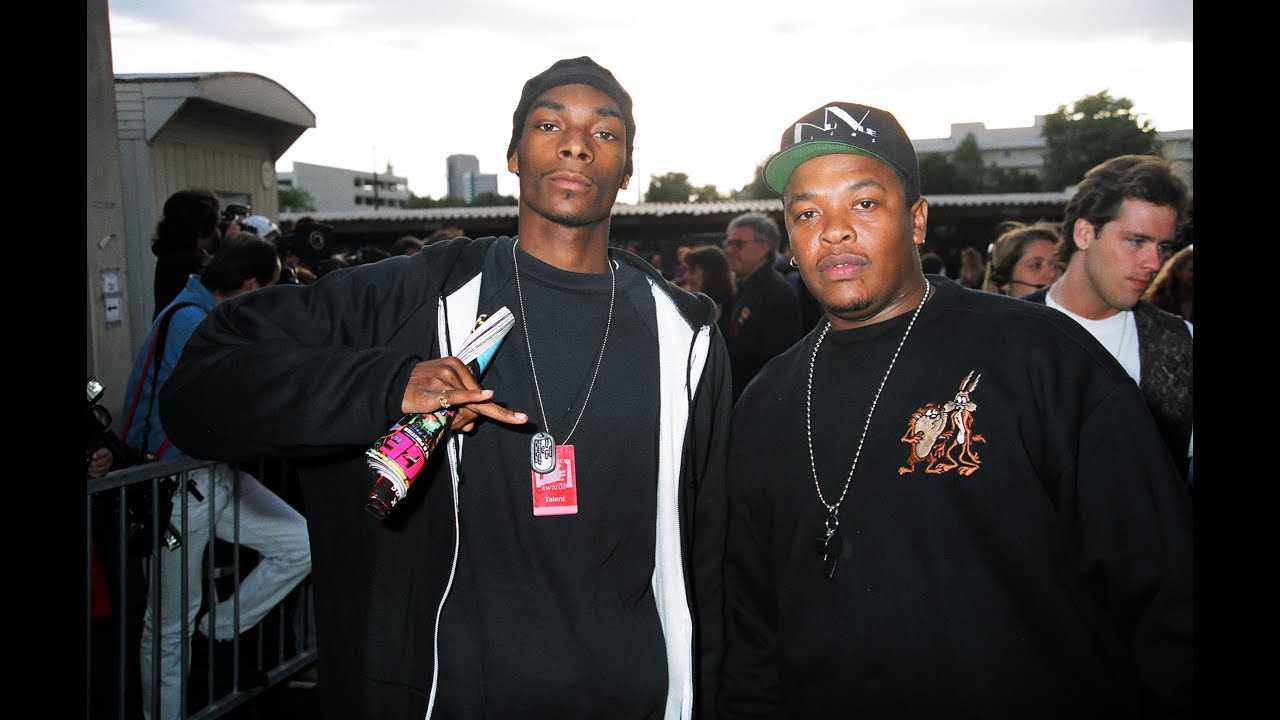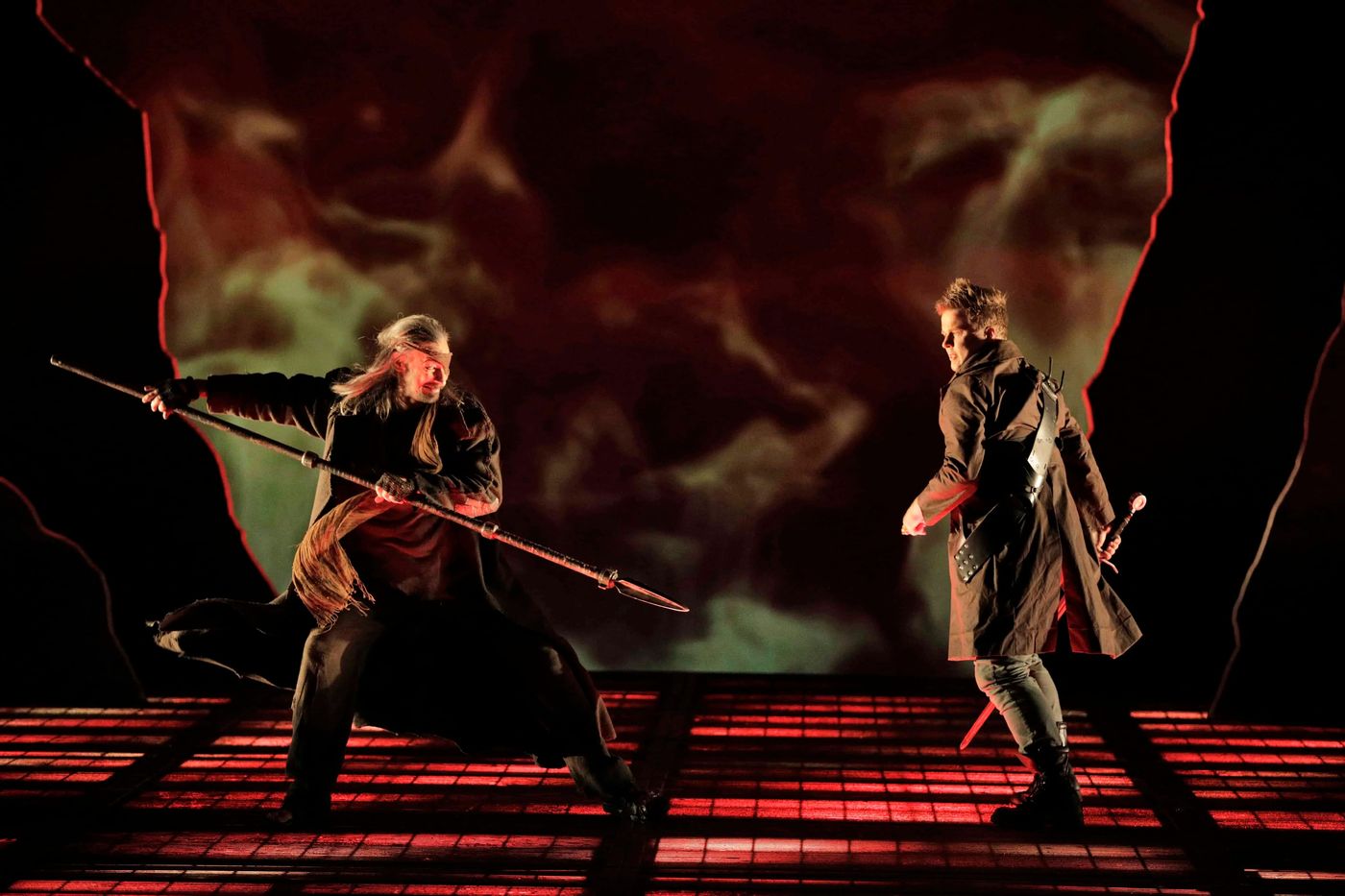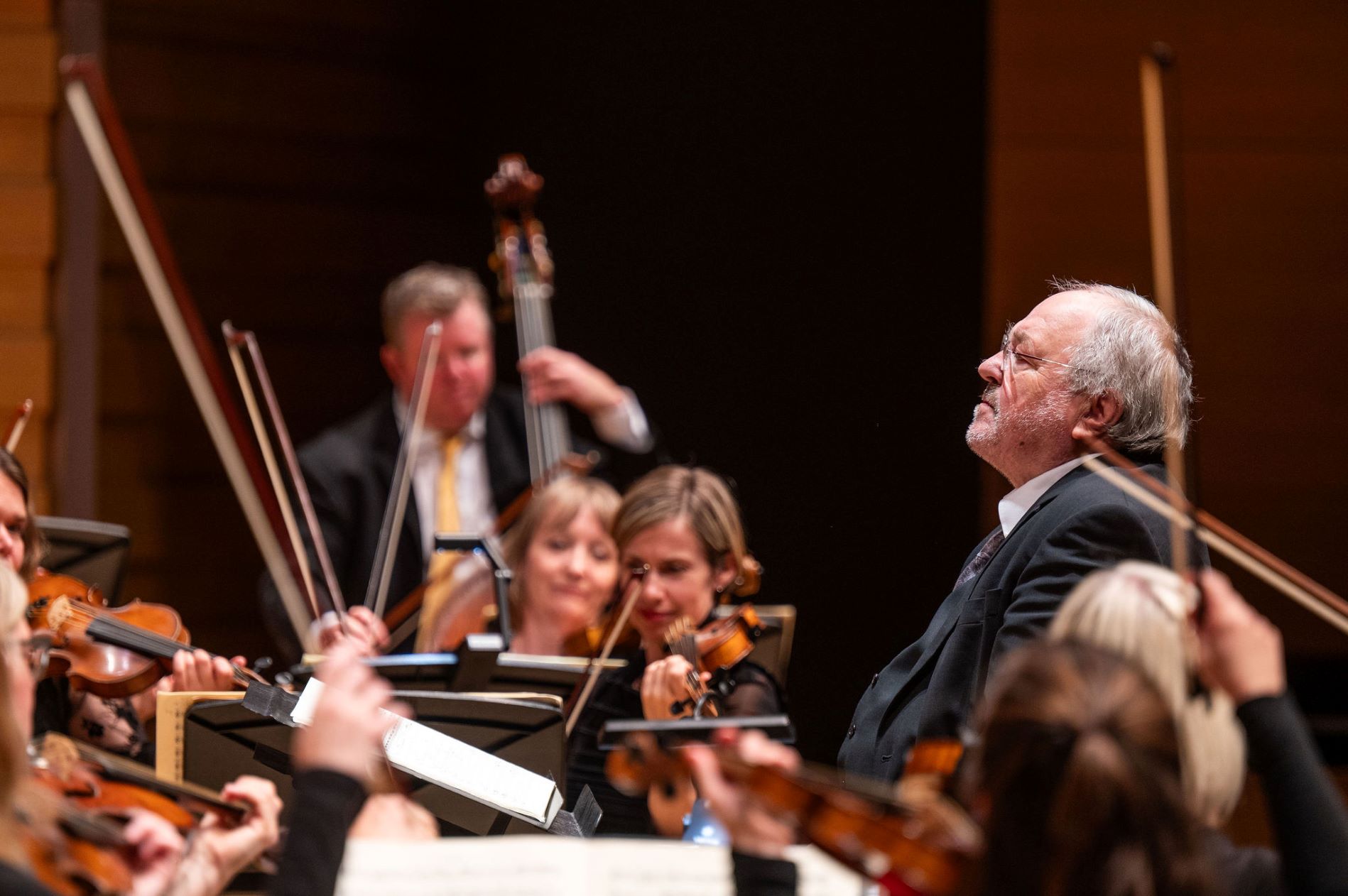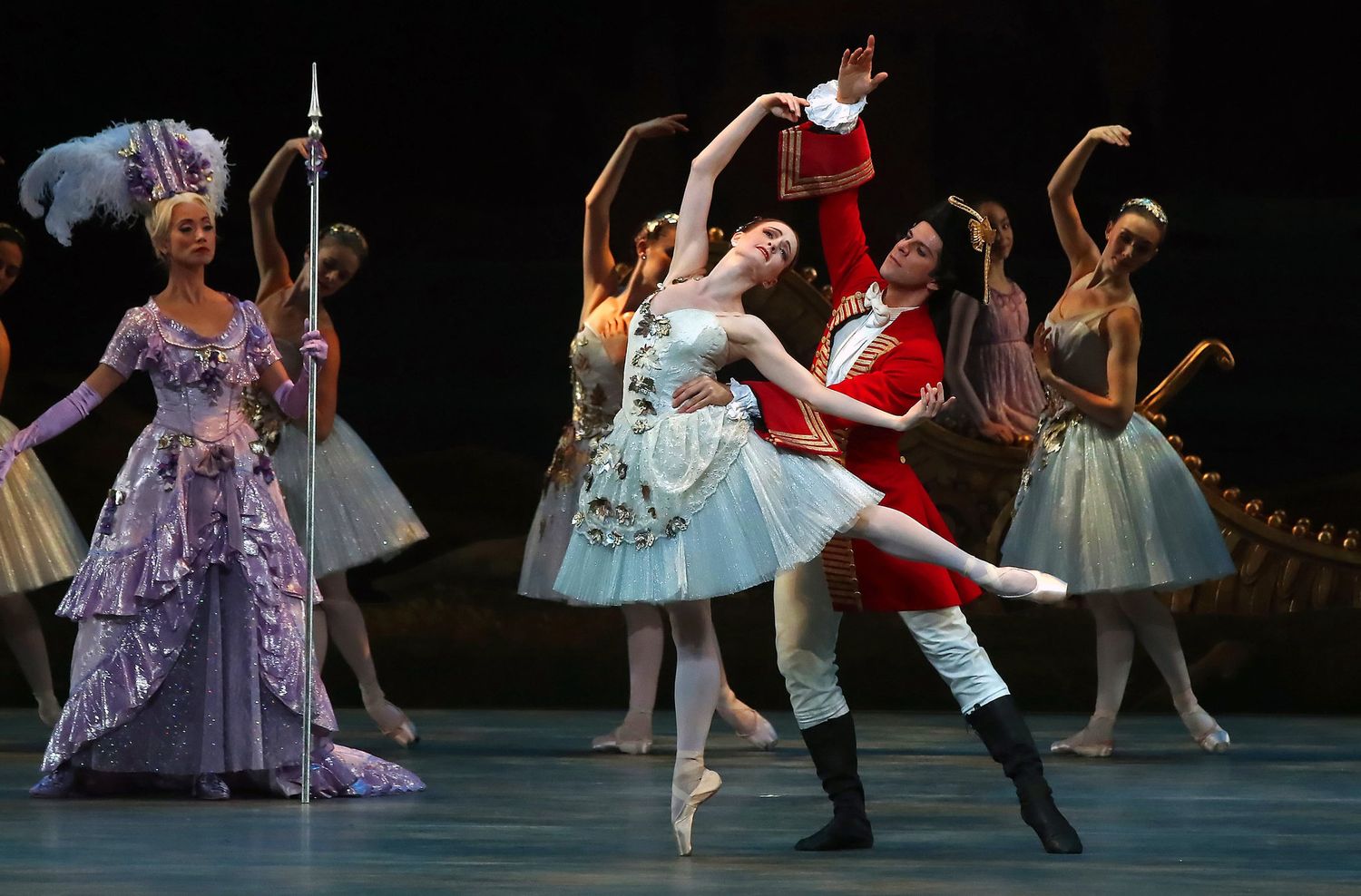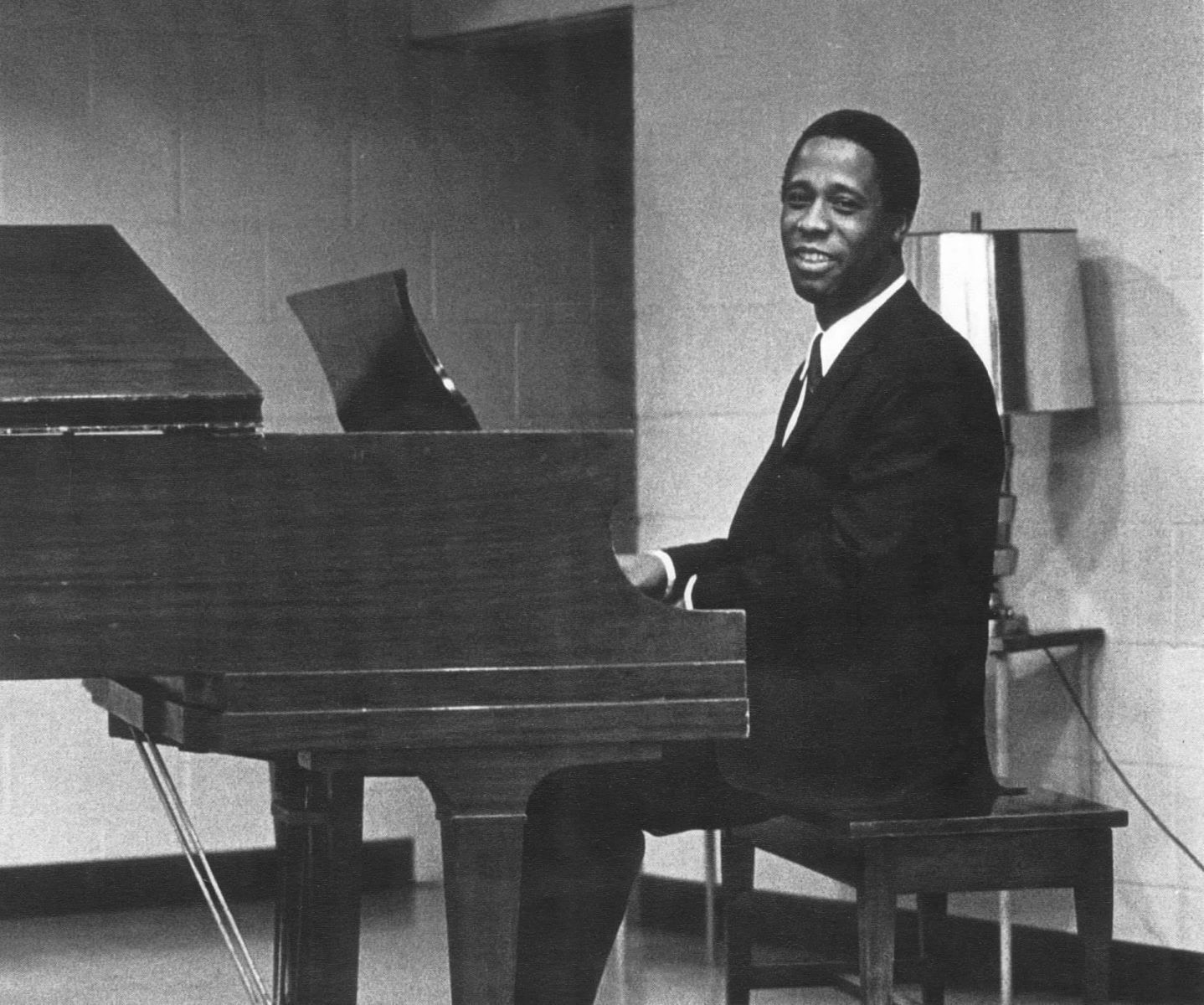Home>Events & Info>Opera>Who Wrote The Music For The Opera Doctor Atomic?


Opera
Who Wrote The Music For The Opera Doctor Atomic?
Modified: January 22, 2024
Discover the talented composer behind the music for the groundbreaking opera, Doctor Atomic. Uncover the genius of the opera's musical creator.
(Many of the links in this article redirect to a specific reviewed product. Your purchase of these products through affiliate links helps to generate commission for AudioLover.com, at no extra cost. Learn more)
Table of Contents
Introduction
Welcome to the fascinating world of opera! Known for its grandeur, powerful voices, and dramatic storytelling, opera has captivated audiences around the globe for centuries. One of the most intriguing and critically acclaimed operas of recent years is “Doctor Atomic.” This thought-provoking production explores the events leading up to the first atomic bomb test during World War II. But today, we delve into the question: who wrote the music for this extraordinary opera?
“Doctor Atomic” is a modern opera that premiered in 2005. Set in the deserts of Los Alamos, New Mexico, it delves into the ethical dilemmas faced by the scientists working on the Manhattan Project, the top-secret initiative to develop atomic weapons. This gripping opera, based on historical events and personal accounts, raises profound questions about the consequences of scientific breakthroughs and the moral responsibilities they entail.
To create a compelling and authentic musical score for “Doctor Atomic,” a talented composer was needed, someone who could capture the intensity, tension, and emotional depth of the storyline. The composer of this remarkable opera is none other than John Adams.
John Adams, born in 1947, is an American composer and conductor renowned for his contemporary classical compositions. With a career spanning over four decades, Adams has become one of the most acclaimed composers of our time. He has received numerous prestigious awards, including the Pulitzer Prize for Music and the Grammy Award for Best Opera Recording.
Throughout his career, Adams has shown a remarkable ability to blend various musical styles and genres. In his compositions, he seamlessly integrates elements of minimalism, post-minimalism, and neo-Romanticism, creating a unique and captivating musical language. His works often tackle historical and political themes, exploring complex subjects through the power of music.
Background of the Opera Doctor Atomic
The opera “Doctor Atomic” was conceived and created by librettist Peter Sellars and composer John Adams. Sellars, known for his innovative and socially conscious theatrical productions, proposed the idea of exploring the events leading up to the first atomic bomb test in the 1940s. Intrigued by the concept, Adams embraced the project and composed the music that would bring this dramatic story to life.
The inspiration for “Doctor Atomic” comes from historical documents, memoirs, and letters written by the scientists involved in the Manhattan Project. The libretto, also written by Peter Sellars, incorporates these primary sources as well as poetry by John Donne and Muriel Rukeyser. The combination of historical accuracy and artistic interpretation results in a poignant and thought-provoking narrative.
The opera focuses on the character of J. Robert Oppenheimer, one of the lead scientists of the Manhattan Project. It explores his internal struggle as he grapples with the moral implications of creating such a devastating weapon. The story delves into the complex relationships between the scientists, their families, and the military officials overseeing the project, ultimately highlighting the ethical dilemmas faced by those involved.
Set against the backdrop of the isolated desert location of Los Alamos, New Mexico, “Doctor Atomic” presents a unique perspective on this significant historical moment. It delves into the minds of the scientists, exploring their fears, hopes, and the tremendous pressure they faced. The opera also addresses the impact of the atomic bomb on the world, raising questions about the responsibility of science in the face of destructive power.
“Doctor Atomic” premiered in 2005 at the San Francisco Opera, where it was met with critical acclaim. It has since been performed at various opera houses around the world, solidifying its place as a modern masterpiece. The opera’s exploration of the moral dilemmas surrounding the creation of the atomic bomb continues to resonate with audiences, reminding us of the weighty decisions humanity faces in the pursuit of scientific progress.
Composer of Doctor Atomic
The composer of the opera “Doctor Atomic” is the renowned American composer, John Adams. Born on February 15, 1947, Adams is widely celebrated for his contributions to contemporary classical music and his distinct musical style.
Adams’s interest and passion for music began at an early age. He studied composition at Harvard University and later pursued further studies at the San Francisco Conservatory of Music and the University of California, Berkeley. His early works were influenced by the minimalist movement, characterized by repetitive patterns and simple harmonic structures. However, Adams’s style evolved over time, as he incorporated a wide range of musical influences into his compositions.
Adams’s unique approach to composition combines elements of minimalism, post-minimalism, and neo-Romanticism. His music is known for its rich harmonies, expressive melodies, and intricate rhythms, which create a captivating and deeply emotional listening experience. Adams’s ability to blend these various styles has earned him praise and recognition in the contemporary classical music world.
With works ranging from operas and symphonies to chamber music and choral compositions, Adams has established himself as a versatile composer. His composition “Nixon in China,” premiered in 1987, brought him international acclaim and secured his position as a leading figure in contemporary opera. “Doctor Atomic” is another significant addition to his opera repertoire, showcasing his ability to tackle complex and thought-provoking subject matter.
In his music for “Doctor Atomic,” Adams masterfully captures the tension, emotion, and underlying conflicts of the story. The music ranges from delicate and introspective moments to powerful and dramatic climaxes, reflecting the psychological states of the characters and the weight of their decisions. Through his skillful orchestration and keen sense of pacing, Adams creates an immersive sonic landscape that intensifies the dramatic impact of the opera.
Adams’s contributions to the world of opera extend beyond his compositions. He has also served as a conductor, leading performances of his own works as well as those by other composers. His dedication to the genre has helped introduce a new generation of audiences to the beauty and depth of opera.
With his innovative approach to composition and his ability to tackle significant historical and social themes, John Adams has made a lasting impact on the world of opera. His music for “Doctor Atomic” continues to captivate and challenge audiences, solidifying his reputation as one of the most influential composers of our time.
Collaborators and Contributors
The creation of the opera “Doctor Atomic” involved a talented team of collaborators and contributors who played crucial roles in bringing the production to life. In addition to composer John Adams and librettist Peter Sellars, several individuals contributed their expertise to make this opera a remarkable and multi-dimensional experience.
Peter Sellars, a renowned director and librettist, worked closely with John Adams to shape the narrative and dramatic elements of “Doctor Atomic.” Sellars’s innovative vision and extensive knowledge of theater brought a unique perspective to the opera, ensuring that the story was presented in a compelling and thought-provoking manner. His collaboration with Adams resulted in a seamless integration of music and storytelling.
The production team also played a vital role in realizing the opera’s vision. Acclaimed scenic and costume designer Adrianne Lobel created the visually striking and immersive sets of “Doctor Atomic.” Her ability to capture the essence of the desolate landscape of Los Alamos, combined with the intense atmosphere of the laboratory, enhanced the overall dramatic impact of the opera.
The lighting design, a crucial element in creating mood and atmosphere, was the work of James F. Ingalls. With his skillful use of lighting, Ingalls added depth and nuance to the visual presentation of “Doctor Atomic,” further heightening the emotional impact of the story.
In addition to the creative team, the performers of “Doctor Atomic” played a crucial role in bringing the characters to life. A talented cast of singers was assembled, with outstanding vocal abilities and the ability to convey the complex emotions and conflicts of their respective roles. Their performances added depth and authenticity to the opera, allowing the audience to deeply engage with the characters and their struggles.
Collaboration in the world of opera extends beyond the stage. The orchestra, under the direction of a skilled conductor, is an integral part of any opera production. In the case of “Doctor Atomic,” the orchestra was led by conductor Lawrence Renes, who brought Adams’s intricate and emotive score to life. Renes’s interpretation and guidance ensured that the music blended harmoniously with the storytelling, elevating the overall experience.
Lastly, it is essential to acknowledge the contributions of the production and administrative staff who work diligently behind the scenes. From stage managers to costume designers, from marketing teams to technical crew, their collective efforts are essential in bringing an opera production of such magnitude to fruition.
The collaboration and dedication of all these individuals and their collective expertise are what make an opera like “Doctor Atomic” a truly immersive and transformative experience. Their contributions work synergistically to create a seamless fusion of music, storytelling, visuals, and performances, resulting in an opera that is greater than the sum of its parts.
Musical Style and Influences
The music of “Doctor Atomic” reflects the distinctive musical style and influences of composer John Adams. Known for his ability to seamlessly blend different genres and musical techniques, Adams creates a unique sonic landscape that enhances the storytelling and emotional impact of the opera.
Adams’s musical style is characterized by a fusion of minimalism, post-minimalism, and neo-Romanticism. His early compositions, influenced by the minimalist movement, feature repetitive patterns and gradually evolving structures. However, Adams expanded upon this minimalist foundation, incorporating a wider range of harmonies, melodic lines, and rhythms into his works.
In “Doctor Atomic,” Adams employs repetitive motifs and rhythmic patterns to create a sense of tension and urgency. These repetitive elements mirror the meticulous and repetitive work of the scientists as they strive to unlock the secrets of the atomic bomb. They also serve to underscore the emotional turmoil and internal struggles experienced by the characters.
Adams’s music also draws on neo-Romantic influences, with lush harmonies and expressive melodies that evoke a wide range of emotions. This musical language helps to convey the depth of the characters’ experiences and the weight of their decisions. It creates a powerful emotional connection between the performers and the audience, heightening the impact of the opera’s themes and narratives.
Another notable aspect of Adams’s musical style is his incorporation of various genres and musical references. Elements of jazz, American folk music, and even popular music can be heard throughout his compositions. This eclectic approach adds layers of complexity and richness to his music, allowing him to explore different moods and textures.
In terms of influences, Adams has acknowledged the impact of composers such as Igor Stravinsky, Gustav Mahler, and Dmitri Shostakovich on his work. These composers, known for their innovative approaches and emotional depth, have undoubtedly shaped Adams’s musical language and compositional techniques.
Furthermore, Adams’s interest in historical and political themes is reflected in his compositions, including “Doctor Atomic.” His exploration of the moral and ethical implications of the atomic bomb mirrors similar themes found in the works of composers like Benjamin Britten and Dmitri Shostakovich, who also tackled historical and political subjects in their music.
The blending of different musical styles and influences is a trademark of John Adams’s compositional approach. In “Doctor Atomic,” this eclectic musical language allows him to delve deep into the emotional and psychological landscape of the characters, creating a vibrant and engrossing musical tapestry that captivates audiences.
Reception and Critiques
“Doctor Atomic” has garnered widespread acclaim and recognition since its premiere in 2005. Audiences and critics alike have been captivated by its thought-provoking narrative, powerful music, and compelling performances.
One of the remarkable aspects of “Doctor Atomic” is its ability to evoke a range of emotions in its audience. The opera explores profound ethical questions and the inner struggles of the characters, leaving viewers with a profound sense of introspection. Many have praised the opera’s ability to address complex themes with sensitivity and nuance.
The music of “Doctor Atomic” has been praised for its inventive use of repetitive motifs, evocative harmonies, and rhythmic intensity. John Adams’s skillful orchestration and sense of pacing create a dynamic and emotional musical experience that complements the intensity of the story on stage.
This thought-provoking opera has also sparked discussions and debates among audiences. The exploration of the moral implications surrounding the creation of the atomic bomb has resonated with many, leading to further contemplation about the role of science and technology in our society.
While “Doctor Atomic” has received widespread acclaim, it has not been without its critiques. Some argue that the opera does not delve deep enough into the psychological complexities of the characters or fully explore the ethical dilemmas at hand. Others have raised concerns about the portrayal of historical figures, feeling that certain liberties may have been taken with their characterization.
Additionally, some reviewers have pointed out that the opera’s focus on the scientists of the Manhattan Project may overshadow the socio-political implications of the atomic bomb. They argue that a broader perspective could provide a more comprehensive exploration of the consequences of these scientific advancements.
However, it is important to note that the diverse range of opinions surrounding “Doctor Atomic” speaks to the opera’s ability to provoke thought and stimulate discussion. It highlights the significance of artistic interpretation and the different lenses through which audiences perceive a production.
Overall, the reception of “Doctor Atomic” has been overwhelmingly positive, with its thought-provoking narrative, powerful music, and compelling performances leaving a lasting impact on audiences. The opera continues to be performed around the world, reaffirming its place as a significant and influential work in the contemporary opera repertoire.
Conclusion
The opera “Doctor Atomic” is a testament to the power of music, storytelling, and collaboration. With John Adams’s compelling music and Peter Sellars’s thought-provoking libretto, this opera explores the moral dilemmas faced by the scientists of the Manhattan Project in their pursuit of creating the atomic bomb.
The fusion of different musical styles and influences in Adams’s compositions creates a unique and captivating musical language, reflecting the emotional depth of the characters and the weight of their decisions. The opera’s gripping narrative and powerful music have resonated with audiences and critics alike.
Through the collaboration of talented artists, including the production team, performers, and conductors, “Doctor Atomic” has come to life on stages across the world. Their expertise and dedication have elevated the opera to new heights, engaging audiences and sparking important discussions about the moral responsibilities of scientific progress.
The reception of “Doctor Atomic” has been predominantly positive, with its thought-provoking themes and exceptional music leaving a lasting impression on audiences. While there have been critiques about certain aspects of the opera, the diversity of opinions reflects the opera’s ability to generate discussion and engage viewers on complex issues.
As an opera that delves into historical events and raises profound ethical questions, “Doctor Atomic” serves as a reminder of the profound impact of scientific advancements and the responsibility that comes with such knowledge. Through the medium of opera, this production encourages audiences to contemplate the consequences of humanity’s pursuit of scientific progress.
With its emotionally charged music, captivating storytelling, and exploration of moral dilemmas, “Doctor Atomic” stands as a powerful example of the transformative and thought-provoking nature of opera. It continues to be celebrated and performed globally, leaving a lasting impact on those fortunate enough to experience its poignant and profound tale.
References
1. Wakin, D. J. (2005). ‘Doctor Atomic’: John Adams and the Atomic Bomb. New York Times. Retrieved from https://www.nytimes.com/2005/10/01/arts/music/doctor-atomic-john-adams-and-the-atomic-bomb.html
2. Tommasini, A. (2005). John Adams’s Awe-Inspiring Opera About the A-Bomb. New York Times. Retrieved from https://www.nytimes.com/2005/10/05/arts/music/john-adamss-awe-inspiring-opera-about-the-a-bomb.html
3. Swed, M. (2005). To the Abyss, in Search of Music’s Soul. Los Angeles Times. Retrieved from https://www.latimes.com/archives/la-xpm-2005-dec-15-et-atomic15-story.html
4. Schudel, M. (2005). Composer’s Atomic Passion. Washington Post. Retrieved from https://www.washingtonpost.com/archive/lifestyle/style/2005/06/05/composers-atomic-passion/53ba4191-b87e-4a9a-8f19-8540b50a1504/
5. Doctor Atomic – San Francisco Opera. (n.d.). Retrieved from https://sfopera.com/213860
Note: The references provided are for informational purposes only. It is advisable to consult additional sources for a comprehensive understanding of the topic.

